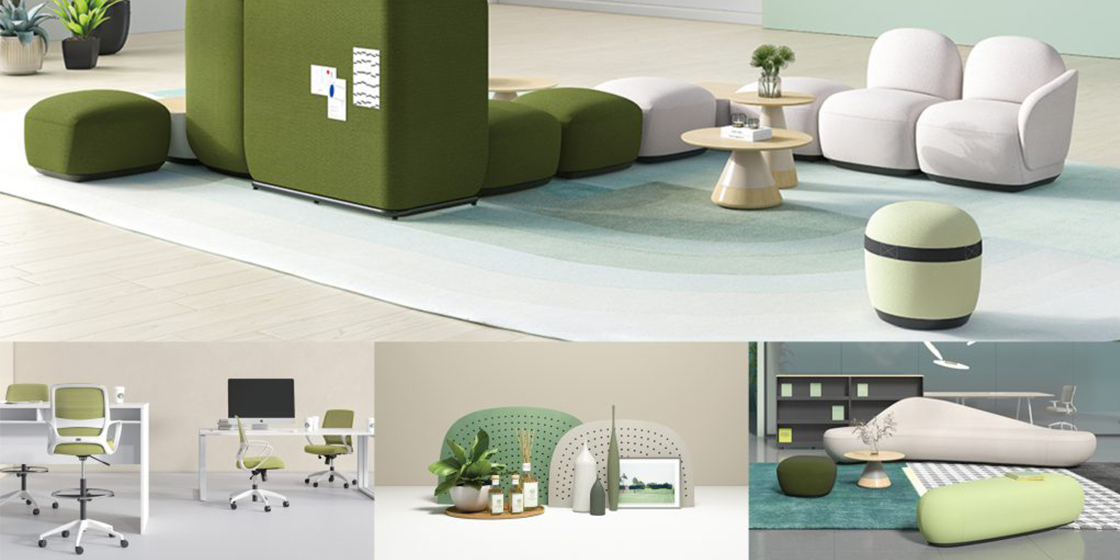
A profitable business stems from happy and healthy employees—in fact, studies show that employees are most productive when their physical and mental well-being are taken care of. Existing knowledge proposes that workplace design can influence mental health via the effects of light exposure, social behavior and affect; the effects of aesthetics on at-work mood and physical well-being; access to nature and recovery from stressful experiences; and privacy regulation and stimulus control. Providing suitable working conditions for all employees avoids stigmatizing employees who have mental health problems while facilitating prevention and return to work among those who do.
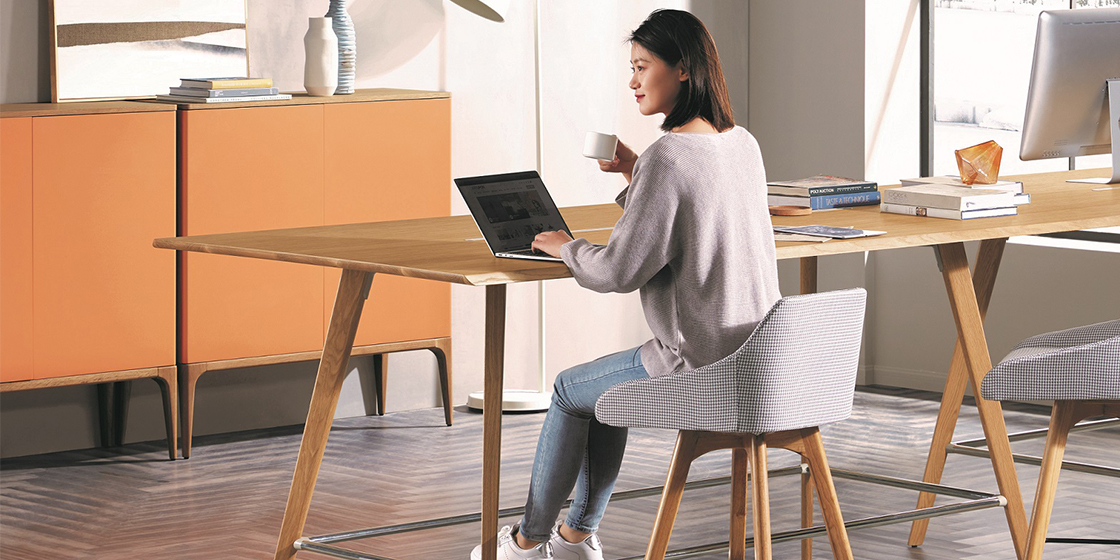
Feature products: Jason II, Chair: Ducky
Why is Mental Wellbeing important in the workplace?
Stress is “the body's reaction to feeling threatened or under pressure.” We all experience it, especially in the workplace. In fact, a small amount of stress is important. It even helps many employees get things done. However, too much long-term stress can turn into anxiety. Furthermore, a consistently low mood can result in depression. These are two common mental health conditions.
For productive and successful business operations, you need to promote good mental health in the workplace. Not to be considered in isolation, mental health strongly impacts employee physical health too. If you're noticing increasing levels of absenteeism and waning productivity, it's worth looking at the root causes of these issues.
How do we improve employee mental health through good design?
Making design changes to your workplace can inspire healthy habits and positive moods, alongside other more direct approaches to nurturing mental wellbeing. Identifying what triggers poor mental health in the workplace can help you improve employee wellbeing, boost productivity, and decrease absenteeism. And, one key area to focus on is your employees' physical environment.
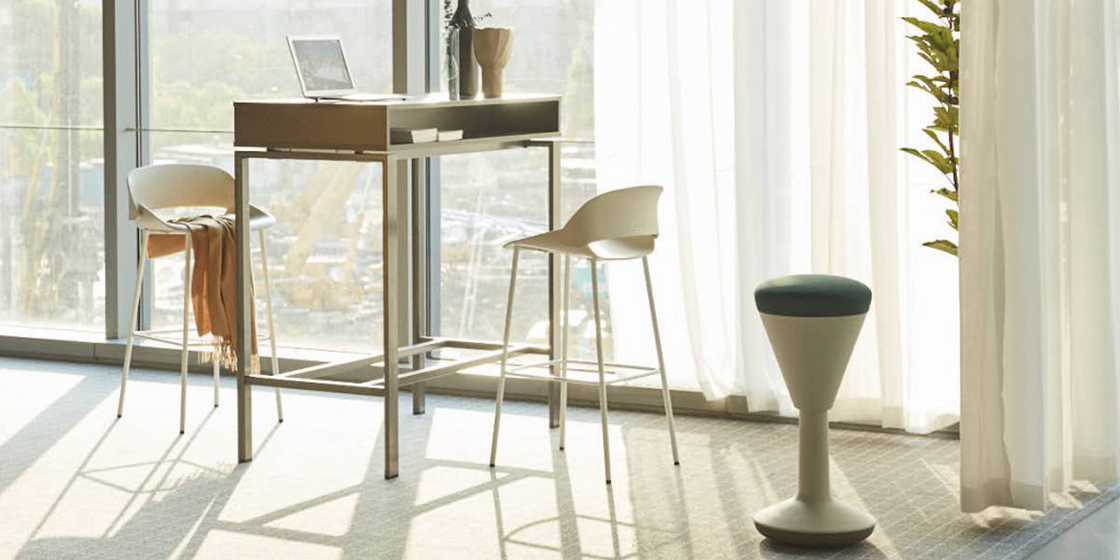
Featured products: Butterfly, Spark
In the wake of a pandemic and with increasing stress levels, when employees return to the office, it would be necessary to relook at the office design aspects concerning mental health. While no office is perfect, there are a few key design elements to keep in mind when creating a comfortable and productive environment for your team.
1. Air quality
Poor air quality can contribute to illness, which is already a common concern for many employees. Keeping in mind that poor indoor air quality can lead to respiratory problems, which impact both mental and physical health. Be sure that any machines that emit exhaust are properly ventilated. Also, be sure to select carpets, finishes, and adhesives that don't give off odors or irritants.
2. Natural light
We all feel better in the outdoors, whether we have a mental health challenge or not. But daylight is also known to be a key component to helping those coping with Seasonal Affective Disorder (SAD). One way to help employees who struggle with SAD is to provide access to natural light in the office. This may be an easy fix if your office has access to many windows—focus on arranging furniture for increased light exposure and use blinds that eliminate glare without blocking out too much light.
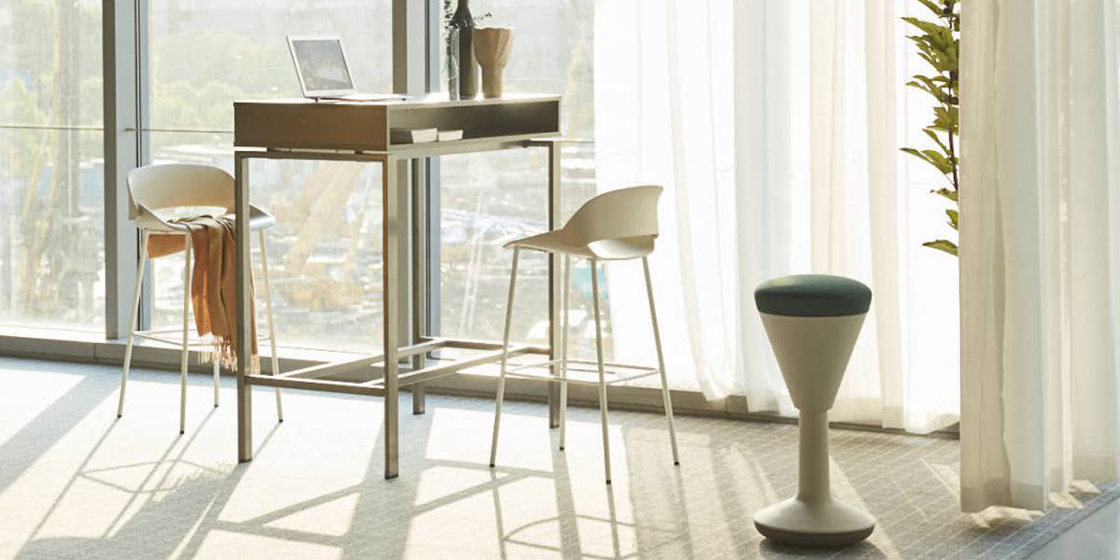
Featured products: Mall desk, Chessy stool, Ducky chair
3. Lighting
Poor lighting, in general, can cause eye strain, headaches, and increased stress levels which can hamper an employee's performance. Our psychological response towards lights varies depending on the kind of light we are in. LED lighting creates a more natural feel than fluorescent lighting, and is safer and more energy-efficient. It is advisable to consider implementing softer lighting that doesn't strain your eyesight.
4. Density
In the post COVID world, the health risks in a high-density office are more than ever. In the age of social distancing, this will be a thing of the past. But densely packed also impacts stress, productivity, and concentration. Make sure that you're using your space strategically, and that employees have access to both quiet areas where they can work privately, and designated breakout areas for creative collaboration.
Check out our article on Safe way back to office Strategies.
5. Acoustics
One of the most important factors to consider when planning your office layout is the way noise will travel through space. Noise from speech, telephones, and machines can disrupt employees' focus and lower their productivity. Several studies have shown that excessive noise contributes to stress, fatigue, and poor cognitive performance.
Open offices are notorious for noise, so think about installing barriers, private offices, or cubicles. Sound-absorbing materials, such as carpets and acoustic panels help to reduce noise.
Learn more about Acoustic Furniture
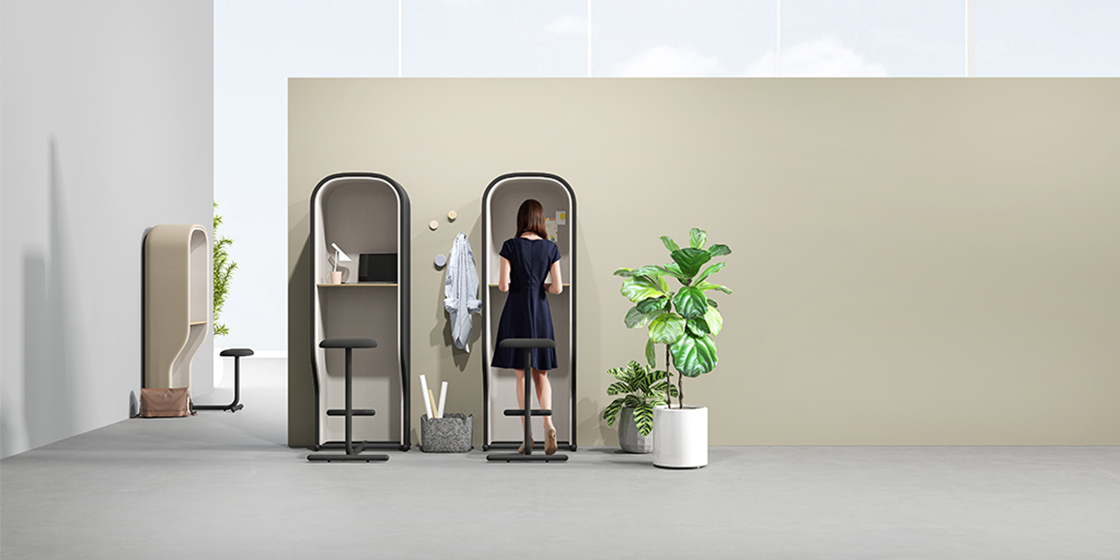
D1 Acoustic series
6. Sensory
Color psychology is a powerful thing. Certain sensory experiences (like colors and textures) will have a profound impact on things like mood, energy levels, and cognitive function. So it's important to choose a therapeutic landscape for a health-enabling workspace. Designers must find the perfect balance between a design that's visually stimulating and one that's overdone.
Learn more about how Colors affect Employees.
7. Biophilia
While it's obvious that plants and flowers can brighten any interior space, research shows that greenery increases cognitive performance in the workplace and results in a more positive psychological state. Components like more wooden structures and plants in a work-space can create a serene atmosphere. This can reduce stress levels and induce a calming effect on us. A little greenery around the office will not only be a pretty sight and make a healthy workplace but will control the quality of air, too.
Learn more about Biophilic Office Design
8. Ergonomics
Having an ergonomically designed workplace can reduce the number of physical conditions. Having a well-maintained workstation with a supportive chair will do wonders for the productivity and wellbeing of employees. This is easily the best thing you can do to make your workplace stress free. Introducing separate Sit-stand desks is a good idea, too which encourages physical activity.
Learn more about Office Ergonomics.
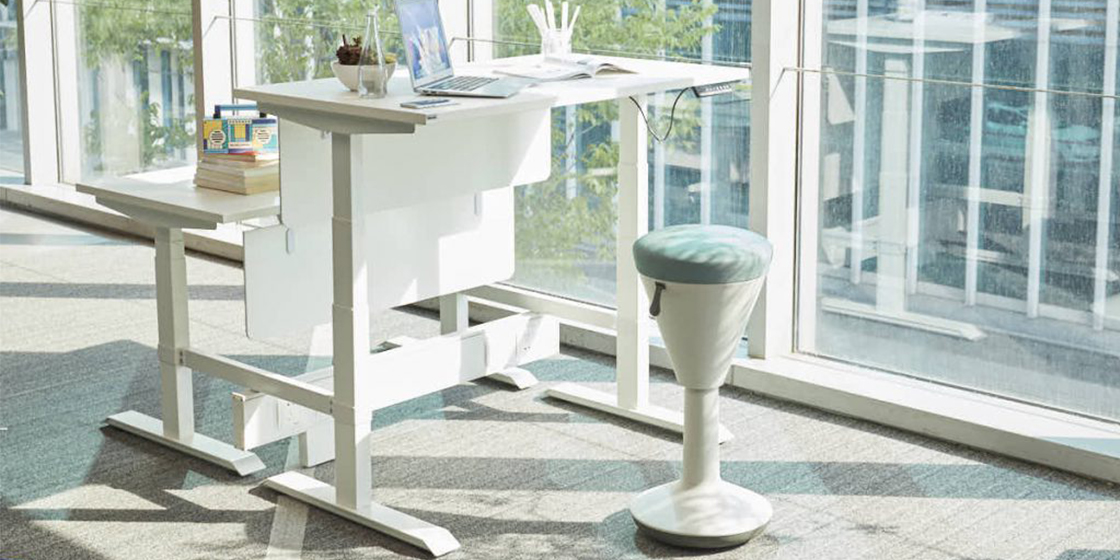
Featured Products: UP1 sit-stand desk, Chessy Stool
9. Collaboration
Mentally-healthy working environments include collaborative zones that encourage colleagues to come together to talk over their problems. A social space for open conversation can stop stress manifesting in severe anxiety. When employees have options, it empowers them to get their work done. It would improve their productivity, helping them reduce stress massively.
The Takeaway
There is an increasing awareness of the importance of mental health and wellbeing of employees in the workplace. There is nothing more appealing to a potential employee than seeing that an employer cares about the wellbeing of their staff, which includes their mental health. By providing an office environment that supports and encourages employee well-being organizations can ensure that well-being is not something that comes as an after-thought. Instead, mental health should be at the forefront of any workplace design.
To know more about Human-centric New Collection designed for a healthy workplace, please click here
